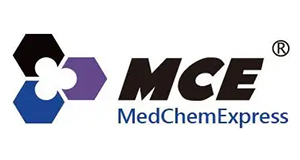Acetaminophen-13C2,15N, CAS 360769-21-7
Acetaminophen-13C2,15N, CAS 360769-21-7
Artikelnummer
MEXHY-66005S4-5
Verpackungseinheit
5 mg
Hersteller
MedChemExpress
Verfügbarkeit:
wird geladen...
Preis wird geladen...
Product Description: Acetaminophen-13C2,15N is the 13C and 15N labeled Acetaminophen[1]. Acetaminophen (Paracetamol) is a selective cyclooxygenase-2 (COX-2) inhibitor with an IC50 of 25.8 μM;is a widely used antipyretic and analgesic agent[2][3][4]. Acetaminophen is a potent hepatic N-acetyltransferase 2 (NAT2) inhibitor[5].
Applications: Metabolism-protein/nucleotide metabolism
Formula: C6 13C2H9 15NO2
References: [1]Russak EM, et al. Impact of Deuterium Substitution on the Pharmacokinetics of Pharmaceuticals. Ann Pharmacother. 2019 Feb;53(2):211-216./[2]Hinz, B, et al. Acetaminophen (paracetamol) is a selective cyclooxygenase-2 inhibitor in man. FASEB J, 2008. 22(2): p. 383-90./[3]Miroslav Dinić, et al. Lactobacillus fermentum Postbiotic-induced Autophagy as Potential Approach for Treatment ofAcetaminophen Hepatotoxicity. Front Microbiol. 2017 Apr 68:594./[4]Uchida NS, et al. Hepatoprotective Effect of Citral on Acetaminophen-Induced Liver Toxicity in Mice. Evid Based Complement Alternat Med. 20172017:1796209./[5]Rothen JP, et al. Acetaminophen is an inhibitor of hepatic N-acetyltransferase 2 in vitro and in vivo. Pharmacogenetics. 1998 Dec8(6):553-9.
CAS Number: 360769-21-7
Molecular Weight: 154.14
Research Area: Inflammation/Immunology
Solubility: 10 mM in DMSO
Target: Bacterial;COX;Endogenous Metabolite;Histone Acetyltransferase;Parasite
Applications: Metabolism-protein/nucleotide metabolism
Formula: C6 13C2H9 15NO2
References: [1]Russak EM, et al. Impact of Deuterium Substitution on the Pharmacokinetics of Pharmaceuticals. Ann Pharmacother. 2019 Feb;53(2):211-216./[2]Hinz, B, et al. Acetaminophen (paracetamol) is a selective cyclooxygenase-2 inhibitor in man. FASEB J, 2008. 22(2): p. 383-90./[3]Miroslav Dinić, et al. Lactobacillus fermentum Postbiotic-induced Autophagy as Potential Approach for Treatment ofAcetaminophen Hepatotoxicity. Front Microbiol. 2017 Apr 68:594./[4]Uchida NS, et al. Hepatoprotective Effect of Citral on Acetaminophen-Induced Liver Toxicity in Mice. Evid Based Complement Alternat Med. 20172017:1796209./[5]Rothen JP, et al. Acetaminophen is an inhibitor of hepatic N-acetyltransferase 2 in vitro and in vivo. Pharmacogenetics. 1998 Dec8(6):553-9.
CAS Number: 360769-21-7
Molecular Weight: 154.14
Research Area: Inflammation/Immunology
Solubility: 10 mM in DMSO
Target: Bacterial;COX;Endogenous Metabolite;Histone Acetyltransferase;Parasite
| Artikelnummer | MEXHY-66005S4-5 |
|---|---|
| Hersteller | MedChemExpress |
| Hersteller Artikelnummer | HY-66005S4-5 |
| Verpackungseinheit | 5 mg |
| Mengeneinheit | STK |
| Produktinformation (PDF) | Download |
| MSDS (PDF) |
|

 English
English






